Armed with the faith of Francis, our newest cardinal preaches peace and condemns Putin
Melbourne prelate Mykola Bychok’s spiritual journey has taken him from Soviet Ukraine to the conclave that chose the Pope.
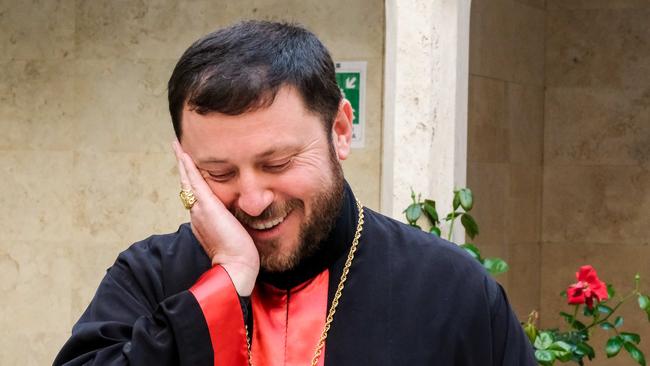
Last February, North Melbourne’s Mykola Bychok went to see the hit movie Conclave. Starring Ralph Fiennes, it is a fictional account of the machinations as cardinals from around the world gather to vote in a new pope.
It would have been of more interest to Bychok than most. Eight days after the film’s European premiere, and six months ago today, pope Francis created Bychok a cardinal. That meant Bychok would be voting in any future conclave.
He didn’t have to wait long. Francis died on April 21. Days later Bychok was at the Vatican and in the middle of a real live conclave whose black smoke turned alabaster after two days and four ballots with American Robert Prevost emerging as the 266th successor to St Peter.
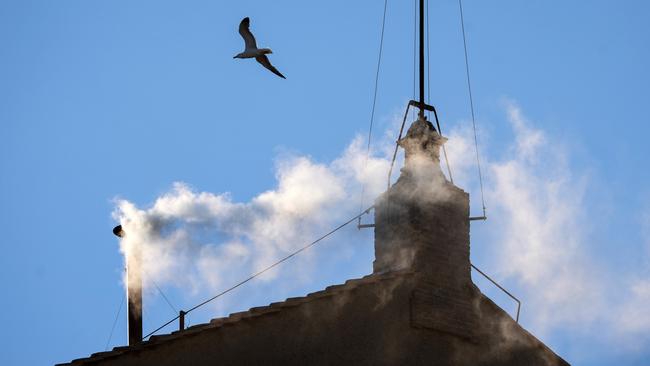
Bychok was born in 1980, in the reign of pope John Paul II. Two popes later he was the youngest of the 133 men worldwide choosing a successor. It is an unwieldy assembly of men from across the world aged up to 80. The priesthood may be all they have in common. But to these men that is everything.
All cardinals speak Latin, if less well these days, but they lean on it if they must. The lingua franca of such gatherings is Italian. Bychok, who speaks Ukrainian, Russian and Polish, does not yet speak Italian but was able to get by with his excellent English.
The day Francis died, Bychok was on his way to Tel Aviv. “I departed on April 21 … and maybe 20 minutes after the departing from Melbourne I got this news,” he tells Inquirer in an exclusive interview from his home base in Melbourne.
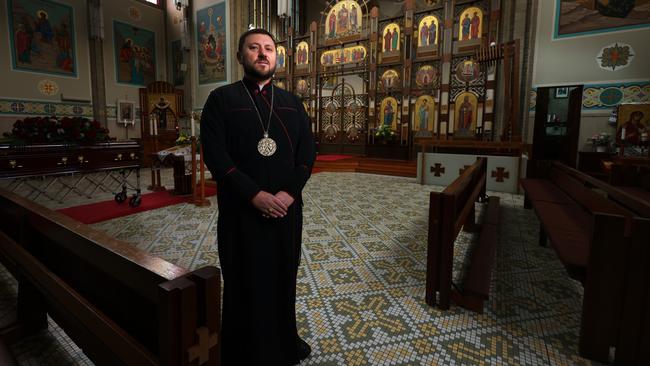
When he landed, “I turned on the news and got this news actually late (that) pope Francis had died, which means there will be conclave.” He had met Francis on a few occasions and recently again so the pope could place on his finger a cardinal’s ring.
The Vatican communicates by email. Bychok received a note with details of Francis’s funeral arrangements and the conclave to follow. The funeral was in St Peter’s Square on April 26. Francis had lain in state in a simple cypress wood coffin lined with zinc in which he was buried just outside the Vatican in the Basilica of St Mary Major, famous because its construction was suggested by the Virgin Mary in a dream that came to pope Liberius, the 36th pontiff.
The conclave took place in the Sistine Chapel but the cardinals had been learning about each other in the previous days, meeting socially and at seminars where many of them discussed the status of the church in their country or region and who they believed might be best to lead them. Many were meeting for the first time because, as Bychok explains, “Francis has appointed many cardinals from the end of the world, yes, for example … Tonga, Papua, New Guinea and Timor Leste”.
“His approach was completely different from his predecessors, which is good because the Catholic Church is a universal church. It shows the universality of the church,” he says.
The cardinals would sit in a hall in a half circle with the dean of the college of cardinals, the Italian Giovanni Battista, or a senior papal assistant known as the camerlengo, Irish-American Cardinal Kevin Farrell, to discuss the issues of the day and learn about those seen as frontrunners to be the next to lead the church. Each address was in Italian, which was translated into six languages.
They shared lunches and dinners and, across the course of a fortnight, met the others. Each cardinal had a couple of opportunities to speak. Bychok also had prepared a speech about the church in Australia. He found the contrasts compelling. “Because, you see, it’s one situation here in Australia, completely another situation in Africa, completely other situation, for example, in Ukraine, where people and church are experiencing the war,” he says.
During the fortnight Bychok encountered Prevost, the Chicago-born cardinal who would become Pope, several times. Prevost had been mentored by Francis, who in January 2023 appointed him prefect of the Dicastery for Bishops, an ancient high-profile role that manages the selection of bishops. That same year, Francis created Prevost a cardinal.
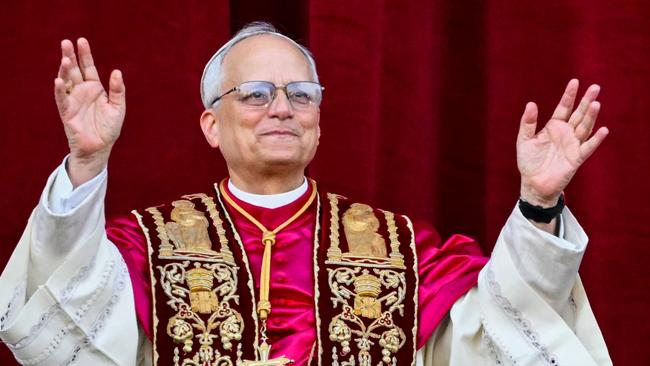
Before the conclave – during which mobile phones are banned – the cardinals were googling the others to better understand them.
They also were issued with a book with information on each cardinal and, of course, they had access to the official Holy See’s basic biographical details of the world’s cardinals. They also had access if they wished – and many did – to the authoritative Cardinalium Collegii Recensio (The College of Cardinals Report) website edited by Vatican reporters and respected insiders Edward Pentin and Diane Montagna. This details the life stories of the men, their education, assignments, strengths and flaws.
Pentin launched the site just last December at the urging of cardinals and others, he says.
Of Bychok the website states: “(He) has faced challenges related to maintaining cultural identity within an ageing congregation and adapting to the needs of younger generations who may not speak Ukrainian fluently. He has highlighted the importance of integrating English into church services.”
Of the new Pope the report pulls no punches, stating his bishops in Peru had helped ensure “institutional stability during the successive political crises that led to the overthrows of successive presidents”. But it damningly adds: “Continued questions over his handling of sexual abuse have also cast a cloud over his prospects.”
As May’s conclave began, Pentin listed 10 men, one of whom he believed would be elected pope. He picked Prevost as a possible compromise candidate.
Bychok describes the conclave as primarily driven by prayer and that the result of the vote was as much the work of the Holy Spirit whose guidance they all sought. I ask him if he voted for Prevost. “It’s a secret ballot,” he says with a smile.
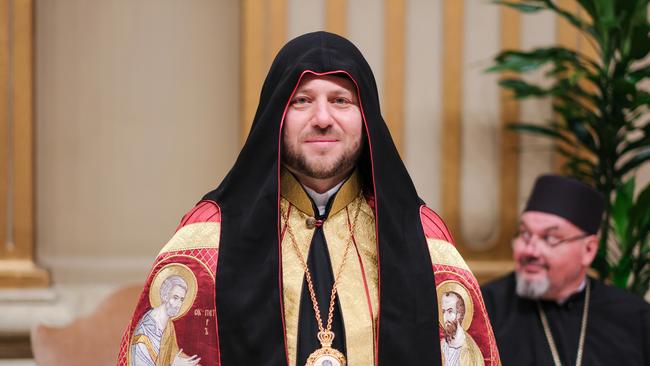
Early life
For Bychok, the fates have been impatient. Much has happened to him since he was born in the year of the boycotted Moscow Olympics, the election of US president Ronald Reagan and the murder of former Beatle John Lennon.
Back then, Ukraine was solidly part of the Soviet Union; with communist exceptions such as China, Cuba, Albania and Vietnam, everything else was called the free world.
To read the era’s Ukrainian Daily, a newspaper published from for the diaspora, is to understand the Ukrainian community’s rage against the cruel, often violent, occupation and repression of their lands by the Russian communists.
To a man and woman, Ukrainians of those times – like the many refugees stranded in safety in Australia today – talk of returning and helping rebuild their country and ridding it of the Russian scourge.
Bychok’s parents, Petro and Hanna, were battlers. His father worked as a road builder and his mother managed dormitories for workers. They are 74 and he is hoping they can come to Australia when Hanna, who recently has undergone open-heart surgery, is well enough. He expects they will like the Australia he has enjoyed since 2020.
The Melbourne Ukrainian community is centred on an old movie theatre it owns in Essendon and community leaders traditionally entrap newcomers – diplomats, high-profile visitors and of course Bychok – into membership of that suburb’s AFL club. In his first days he was taken to Marvel stadium for an Essendon match and he has a Bombers scarf, “but I have other scarfs from the Cats and the Eagles”, he is quick to point out.
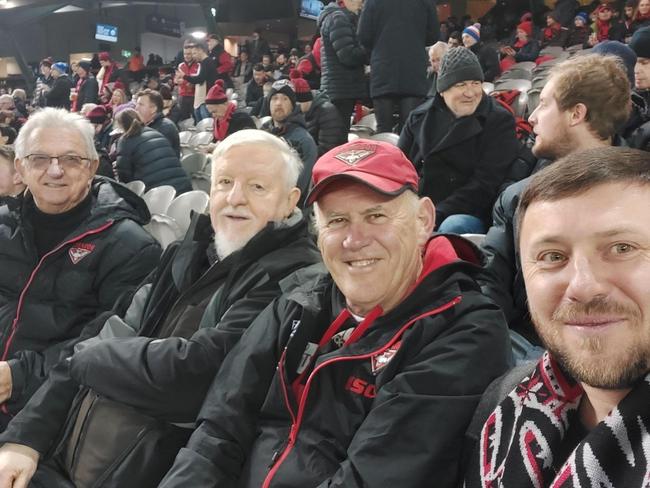
As a youngster he learned accordion for two years and taught himself piano and guitar, but he was not exposed to much Western music and his preference remains the music of his homeland.
He turned to the church early but, like all boys, had teenage dreams of becoming “a policeman, a football star or a famous singer”. He even thought of training to be a cosmonaut: “In the Soviet Union it was a popular profession to be a cosmonaut,” he says.
But aged 13 he started taking his trips to the church seriously. By then the Iron Curtain had fallen to reveal a nation that – despite more than a century of brutal repression by Russians, including regular bans on Ukrainian language – had kept its clearly defined culture and religious practices pretty much intact. But it had not been easy.
The unsleeping malice the Russians have for their neighbours was hardly invented by Vladimir Putin. Russia has long sought to extinguish Ukrainian identity. Russian emperor Alexander II who reigned from 1855 – he was the genius who sold Alaska to the Americans – first banned the printing and importation of books in Ukrainian in 1876. (Just this week The Times reported that Russian art experts in the company of armed Russian soldiers have comprehensively looted about 30 Ukrainian museums in the occupied east of the country including gold and silver items dating back 2300 years. They have looted 14,000 objects from Kherson Regional Art Museum alone.)
But the decades under communist rule were significantly harder and Bychok recalls well the secret underground life of worship, and he admired the brave defiance of the priests who kept the faith alive.
He was born in Ternopil, a city the size of Geelong, where his younger brother, who works for a company that makes windows, lives with his wife and children. It is in the west of Ukraine, not far from the border with Poland, but even though the Russian invasion is centred on Ukraine’s eastern flank, Putin has bombed cities in its west, including Ternopil and Lviv, and some Russian missiles are reported to have entered Poland’s territory. Poland is part of the NATO security umbrella. Ukraine is not.
Bychok’s early years were unremarkable until Ukraine declared independence on August 24, 1991. “I was 11 years old but I remember that time, especially, as you know, before the collapse of the Soviet Union, our church was persecuted,” he says. Only the Russian Orthodox Church was left alone. But it too had faced deadly persecution as the communists sought to eliminate religion from 1922, murdering an estimated 95,000 priests. Under the 1936 Stalin Constitution religious freedom was restored, but Nikita Khrushchev and Leonid Brezhnev returned to harassing believers and killing priests, monks and the openly faithful.
In this newly liberated land, the young Bychok became an altar boy and attended retreats at monasteries around the country, and in 1997 he entered training with the Redemptorist Fathers, a lesser known order ministering to the underprivileged but briefly made famous in 1988 when the photo of brave Irish Redemptorist priest Alec Reid giving last rites to a dying English soldier lynched by Provisional IRA killers in Belfast flashed around the world. Reid then played a key role in bringing peace to Northern Ireland.
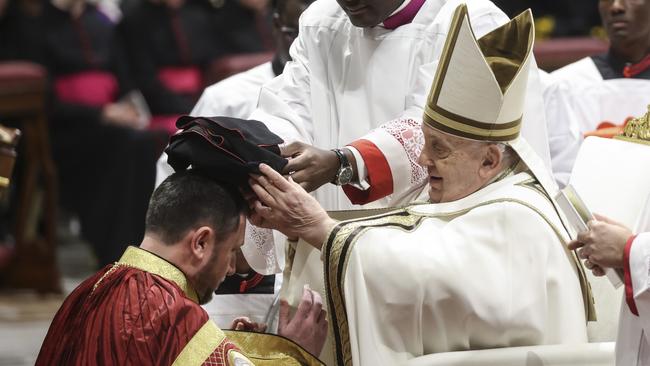
‘It was a huge shock for me’
Bychok was touched by the Redemptorists’ example of how to live a generous and constructive life. He studied with them at a seminary in Tuchow, Poland, near the border of Serbia and Ukraine, completing a master’s, and took his final vows in 2003. The following year he was appointed a deacon in Lviv and then he was sent to Siberia. Literally; for two years he ministered to the people of Prokopyevsk, a harsh mining town of diminishing possibilities in Russia’s south to which waves of Ukrainians – about 750,00 in total – were forcibly deported from the west of their country from 1947.
These were people who had survived the German occupation of their land and now resisted the communists but were regarded as troublesome “nationalists and bandits”. Many were raped and murdered. The more fortunate were sentenced to work in grim mines where illness was a way of life and death. Those who survived lived small lives among people who did not like or trust them.
“My first impression when I landed for the first time in Siberia, it was like flying back centuries. These people were having a bad life. It was a huge shock for me,” Bychok says.
Some moved back to Ukraine when the Soviet empire collapsed, but others had set down roots, their children and grandchildren speaking Russian and the routines of their lives too deeply set for change. In some ways it was the Stockholm syndrome on a large scale.
For Bychok, it was back to Ukraine to serve as a rector in Ivano-Frankivsk, and then on to become vicar of a Ukrainian parish in Newark, New Jersey, from which he was promoted in July 2012 to be the bishop of the Ukrainian cathedral in Melbourne.
But for the people of his homeland and those trapped for generations in Russia, the trouble was just beginning. What emerged following Mikhail Gorbachev’s era of glasnost and perestroika was a modern Russian Orthodox Church firmly stitched into the fabric of the KGB and giving it cover for illegal military actions in Moldova, Georgia and Ukraine.
Putin ‘a dictator and a killer’
As Adolf Hitler had his cruelly invaluable henchmen in Adolf Eichmann and Heinrich Himmler, Putin has Vladimir Mikhailovich Gundyayev, better known as Patriarch Kirill, who heads the Russian Orthodox Church and who is a fellow arsonist while Putin sets eastern Europe ablaze. Kirill says Putin is saving modern Russia as a “miracle of God” in his holy war against the Satanic West. Putin is a “dictator and a killer” Bychok says, “his hands fully in blood”. He mentions Russia’s other invasions but adds: “But the worst war is right now, what is happening in Ukraine.”
He says he cannot reconcile the behaviour of Kirill: “I can’t understand the attitude of the patriarch. (It’s) surreal,” says Bychok. “He should be like peacemaker. Because, as you know, God himself preached ‘blessed are peacemakers’.” Instead, according to Bychok, Kirill is “blessing war”. “He is blessing what Putin is doing.”
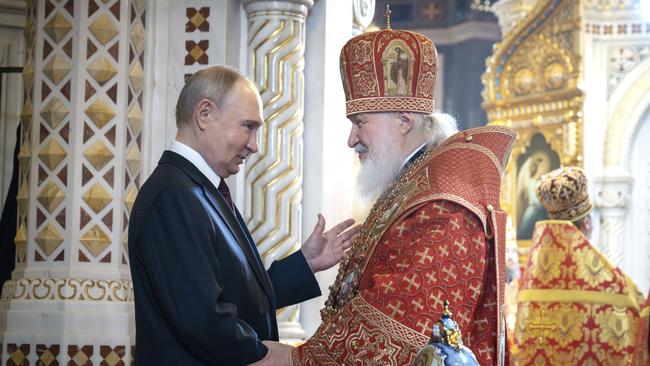
Meanwhile, Kirill’s deputies have been blessing Russia’s ballistic missiles, while the man himself reportedly has described Russia’s nuclear weapons as a God-given shield and was reported on May 5 to have said: “Russia has remained independent and free thanks to nuclear weapons, which were created with divine guidance granted to Soviet scientists.”
Kirill and the late Francis met in Cuba when the Russian was there to meet the president of the Marxist-Leninist outpost in 2016. It was the first meeting between the head of the Catholic Church and that of Moscow. By then, Francis had met Putin several times. It was reported that Francis and Kirill had a cordial meeting and discussed the persecution of Christians across the Middle East.
But things were frosty when they next spoke, by video phone on March 16, 2022, weeks after Russia’s ferocious attack on Ukraine – endorsed by Kirill – began. Francis told the patriarch that wars were always unjust. “The one who pays is the people of God,” he told Kirill. “Our hearts cannot help but cry in front of the children, the women killed, all the victims of the war. War is never the way.” Weeks later Francis was quoted in Corriere della Sera, Italy’s best-read newspaper, warning that Kirill “cannot become Putin’s altar boy”.
It stung the patriarch, who on the day he spoke to the pope was alongside his trusted aide, the Metropolitan Hilarion Alfeyev, effectively the Russian Orthodox Church’s foreign affairs minister.
That same month Francis made the altar boy comment, Alfeyev led a Russian delegation to a meeting of Orthodox churches in Cyprus.
A statement from it read in part: “The participants in the meeting have been unanimous in condemning the wars and call upon all the parties involved in the conflicts to do everything within their power for the urgent establishment of peace and for ensuring safety in Ukraine, Russia, Europe and the whole world.” Alfeyev raised no objection to these words, and they might have sailed through without comment, except the next sentence had a barb clearly directed at Kirill: “We also condemn systematic campaigns of disinformation that promote divisions and hatred.” Alfeyev was sacked.
Bychok vigorously defends the country of his birth and whose descendants he represents in his new country. “We are not invaders because we are just doing what we should do, what we must do, to defend our own land, to defend our people, to defend our children.”


To join the conversation, please log in. Don't have an account? Register
Join the conversation, you are commenting as Logout